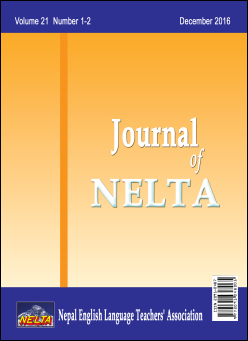L2 Vocabulary Learning and Testing: Student Proficiency and the Use of L1 Translations versus L2 Definitions
DOI:
https://doi.org/10.3126/nelta.v21i1-2.20205Keywords:
L2 vocabulary, L1 translation, Testing, Intentional learning, ProficiencyAbstract
This study examines the relationship between student proficiency and the use of first language (L1) translations versus second language (L2) definitions in the learning and testing of L2 vocabulary. For this study, 48 Japanese L2 learners of English studied 200 lexical items from the Academic Word List over a ten-week period. The language in which the meaning of the target vocabulary was presented and tested was manipulated such that the learners were given half in their L1 and half in their L2. The results showed that the low proficiency group learnt significantly more vocabulary than the high group. However, while student proficiency did not interact with study language, it was significantly related to testing language. That is, both overall and over time, the higher ability learners did relatively significantly better on the L2 definition tests and worse on the L1 translation tests, and vice-versa.
Journal of NELTA, Vol. 21, No. 1-2, 2016, Page: 93-104
Downloads
Downloads
Published
How to Cite
Issue
Section
License
© Nepal English Language Teachers’ Association (NELTA)
Authors are required to transfer their copyright to the Nepal English Language Teachers' Association (NELTA)
The Journal of NELTA is copyright by Nepal English Language Teachers’ Association (NELTA). Apart from citing/referencing in academic works, no part of any materials may be reproduced by any process without prior written permission from its copyright owner – NELTA. Requests and enquiries concerning reproduction and rights may be addressed to NELTA or the editorial board at neltaeditorialboard@gmail.com.




